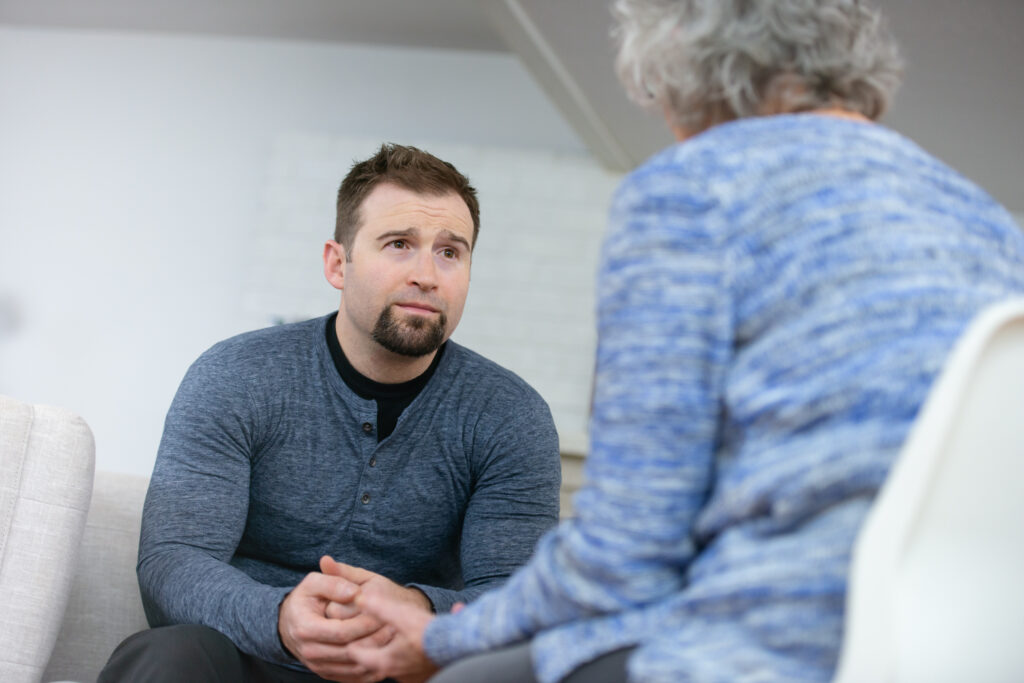Bipolar disorder is a mood disorder that causes extreme shifts in thoughts, feelings, and behavior, called manic and depressive episodes. When does bipolar disorder start to show these episodes? Let’s learn more about manic and depressive episodes below.

As you can see, bipolar disorder can affect all ages, with the highest prevalence between eighteen and twenty-nine. Getting proper treatment, regardless of age, is essential to make a full recovery.
It’s why providing information on questions like when does bipolar disorder start to show is so important.
Geographics can also play a role in bipolar disorder rates. During treatment, it’s essential to understand how different areas and lifestyles can affect mental health issues.
Each of these risk factors can be co-occurring or contribute to bipolar disorder. At AIM, we treat the whole person and all contributing life factors.
That means we not only treat bipolar disorder but also diagnose and treat any underlying conditions that can cause or worsen bipolar symptoms and daily life.

When does bipolar disorder start to show? For many, it’s in their adolescent stage of life.
For adolescents, treatment for bipolar disorder may include:
AIM provides several treatment options for those with mental health conditions like bipolar disorder and substance use disorders.
If you’re looking for answers to the question “when does bipolar disorder start to show?” or trying to find diagnostic resources, we’re here to help.
Contact us to learn more about how AIM helps with bipolar treatment.
Gregory Ng is the CEO of Brooks Bell. In his nearly 25 years in marketing, Greg has created innovative solutions leading to digital and cognitive transformations for the biggest high-tech, retail and financial brands in the world. Greg adds knowledge in marketing strategy, content production, and brand awareness to the AHV advisory board.
Hunt Broyhill holds several positions within the Broyhill family offices and serves as President, Chairman, and Chief Executive Officer of BMC Fund and Chief Executive Officer of Broyhill Asset Management. Hunt brings valuable experience in capital allocation, real estate, and investor relations to the AHV advisory board.
Alan Hughes was formerly the Executive Vice President and Chief Operating Officer at Blue Cross and Blue Shield of North Carolina. In addition to BCBS, Alan held officer positions in both operations and technology at GE Commercial Finance, Deutsche Bank, and American Express. Alan brings a unique combination of efficient process design and technological problem solving to the AHV advisory board.
Lynn is the CEO of Broadstep. Previously, Lynn held various roles in both healthcare and finance where she oversaw multi-site, multi-state organizations within primary care, acute and chronic services, hospitals, and pharmacies. Lynn brings valuable experience in healthcare leadership, recruiting, and growth strategy to the AHV advisory board.
John Roos is the retired Senior Vice President and Chief Growth Officer for Blue Cross and Blue Shield of North Carolina. Under Roos’s tenure, the company’s revenue grew from $1.5 billion to $9.5 billion, while adding 1 million members. John brings valuable experience in growth strategy, enterprise sales, and provider contracting to the AHV advisory board.
Dr. Hendree Jones is the Executive Director of UNC-Horizons and an internationally recognized expert in behavioral and pharmacologic treatments for pregnant women and their children. Dr. Jones has received continuous funding from the National Institutes of Health since 1994 and has over 200 peer-reviewed publications. Dr. Jones is an advisor to the UN, WHO, SAMHSA, ASAM, and ACOG through which she consults throughout the United States and internationally. Dr. Jones brings valuable experience in grant writing, research, and healthcare administration to the AHV advisory board.
Brad is the CEO Emeritus for BCBSNC and Chair of the BCBSNC Foundation. He served as Gov. Jim Hunt’s general counsel and is a past chair of the UNC Board of Governors. Brad serves on numerous public and private boards and is a lifelong North Carolinian with degrees from Appalachian State, Wake Forest, and Duke. He brings valuable experience in healthcare, law, higher education, and politics.
Jake Summers is a passionate entrepreneur who is dedicated to bringing the energy of change to existing healthcare business models and making higher quality healthcare more accessible. Jake co-founded a mango farming/export company in Cambodia and serves as an advisor for a number of small businesses. Jake is the co-founder of Advaita Integrated Medicine and is the Development Director and a Partner of Green Hill.
Tripp Johnson is a serial healthcare entrepreneur who’s dedicated his post-military professional life to serving young adults. He is the co-founder of Advaita Integrated Medicine, Advaita Health Ventures, and Green Hill Recovery. Tripp is passionate about making quality healthcare more affordable and accessible through innovative business models and technology-focused solutions.